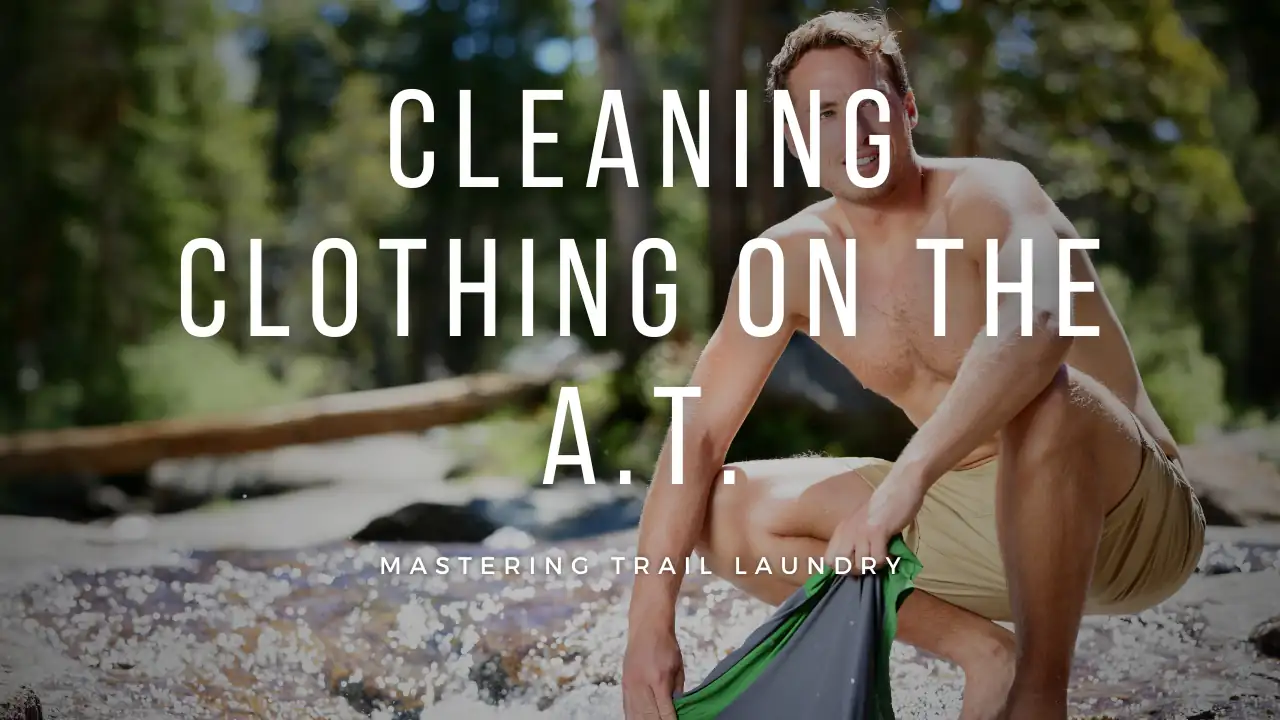When you're planning a thru-hike, you'll need to strike a delicate balance between being prepared and keeping your pack light. The number of clothes you bring can make or break your hiking experience. While it might be tempting to pack for every possible scenario, seasoned hikers know that less is often more. But how little can you get away with?
The answer isn't as clear-cut as you might think. Factors like trail conditions, climate, and personal preferences all play a role in determining the ideal clothing setup for your journey. Let's explore the essentials that'll keep you comfortable without weighing you down.
Navigating Your Pack Essentials
- Pack one or two sets of clothes, including base layers and mid-layers for versatility.
- Carry extra socks (2-3 pairs) to maintain foot dryness and prevent blisters.
- Include a lightweight fleece or insulated layer for unexpected cold weather.
- Bring quick-drying, versatile pieces that can be layered for different conditions.
- Consider climate and season when deciding on the number of clothing changes.
Trail-Ready Wardrobe: Essentials for Your Thru-Hiking Journey

When preparing for a thru-hike, you'll need just a few essential clothing items to keep you comfortable and prepared for various conditions.
As you begin your epic journey, standing at the trailhead, pack filled with carefully chosen gear. You've got your trusty base layer on, a moisture-wicking boon that helps keep sweat at bay as you hike up grueling ascents and push through humid valleys.
Over that, you've got yourself a quick-drying outer layer, ready to shield you from the elements and adapt to ever-changing weather.
In your pack, you've stashed a nighttime wardrobe swap, including that vital set of long underwear for those bone-chilling mornings or nights under the stars.

Keep in mind, a lightweight fleece or insulated layer is your secret weapon against unexpected cold snaps, ensuring you're ready for whatever Mother Nature throws your way.
Conquering the Elements: Weather-Wise Packing

Throughout your thru-hiking journey, weather will play an vital role in determining your clothing needs. You'll face the elements head-on, from scorching sun to bone-chilling winds, and your wardrobe must adapt accordingly.
In warmer climates like Central Florida, where the heat saps your energy and humidity clings to your skin, you'll find solace in quick-drying fabrics. One or two sets of these moisture-wicking marvels will keep you comfortable as you traverse the sun-drenched trails.
But venture into the unpredictable Pacific Northwest, and you'll need to pack strategically. The weather forecast becomes your lifeline, dictating extra sets of warm layers or rain gear.
Depending on the weather, you might find yourself peeling off layers or adding on based on volatile and unexpected weather changes.
Keep in mind, a spare set for sleeping or emergencies is essential, ensuring you're prepared for whatever Mother Nature throws your way.
The Thru-Hiker's Armor: Mastering the Art of Layering

You'll feel like a master of the elements when you nail your layering strategy for thru-hiking. A true thru-hiker will balance the needs of the trail with adaptable multi-faceted gear that can be used in layering systems allowing them to carry less volume but more efficiency in clothing.
Base Layers: The Foundation of Comfort
A well-thought out base layer is essential for successful thru-hiking. As you start on your trek, you'll must select materials that wick moisture away from your skin, keeping you dry and comfortable through grueling climbs and unpredictable weather.
When packing for your adventure, keep in mind these vital base layer essentials:
- 1 sunshirt or sun hoody for overall versatility and sun protection
- 1 pair of long underwear for cold nights and mornings
- An extra pair of socks to rotate and keep feet in clean dry socks

Your base layer should fit snugly, creating a thermal barrier adding minimal bulk. The breathable fabric will work tirelessly to manage sweat as you conquer challenging terrain, allowing you to focus on efficient movement.
Versatile Mid-Layers: Adaptable Insulation
Building upon your solid base layer foundation, mid-layers offer the flexibility you need to tackle diverse conditions. On trail you'll face a wide array of averse weather, ranging from chilly mornings to unexpected afternoon showers or even snow.
This large variability is exactly when the versatility of a good mid-layer comes into play, providing extra warmth without weighing you down.
As you escape poor weather and into better conditions you can easily shed this layer, stuffing it into your pack without adding bulk. When you stop hiking and your body temp or outside temperatures plummet, your trusty mid-layer can be tossed on again to maintain heat.

Outer Shells: Maximum Protection, Minimum Weight
Frequently overlooked yet vital, an outer shell is your final defense against Mother Nature. As you plan your gear, choosing the right rain gear can make you comfortable or miserable.
Your outer shell should be a lightweight and breathable item that shields you from wind and rain while also allowing sweat to escape.

When selecting your armor against the elements, contemplate these significant factors:
- Fabric technology: Look for materials like Gore-Tex that offer superior waterproofing and breathability.
- Functional features: Seek out adjustable hoods, zippered vents, and pockets for adaptability in changing conditions.
- Fit and layering: Verify your outer shell accommodates base and mid-layers without restriction.
As you explore rugged terrain and face unpredictable weather, your outer shell becomes your protective blanket.

Fabric Wisdom: Choosing Materials for Trail
Fabric selection in thru-hiking can't be overstated. Choosing the right materials will make your gear be a steadfast companion, helping shield you from nature's whims while also keeping you comfortable throughout grueling miles.
Choosing synthetic fabrics like polyester or nylon for your base layers can get you solid performance at a good cost as they provide moisture-wicking that will whisk the sweat away, leaving you dry even under massive exertion.
Material durability is your constant guardian against the nonstop assault of rocks, branches, and rough terrain. Select reinforced nylon to withstand the punishing demands of thru-hiking, ensuring your gear lasts as long as your determination.
Trail Laundry 101: Keeping Clean on Your Thru-Hike
With your fabric choices locked in, let's turn our attention to keeping those carefully selected garments clean and functional on the trail. The Appalachian Trail's rugged terrain and unpredictable weather demand a strategic approach to washing and maintenance.
You'll find yourself immersed in a world where laundry becomes an art form, and every rinse is a small victory against the elements.
Here's your guide to mastering trail laundry:
- Rinse sweaty clothes early when possible, allowing them to dry while hiking in the sun of the day
- Wash thoroughly every 4-7 days, choosing hostels or hotels to get real cleanliness

Pack Like a Pro: Thru-Hiker's Guide to Efficient Clothing Storage

When it comes to packing your clothes for a thru-hike, less is definitely more. As you stand before your empty backpack, heart racing with anticipation, bear in mind that every ounce counts on the trail. Your packing strategies should focus on versatility and efficiency, allowing you to carry just one or two changes of clothes.
Don't forget those extra socks – your feet will thank you after miles of grueling terrain. As you painstakingly roll each item, fitting them into every nook and cranny of your pack, envision the incredible journey ahead.
Consider the weather conditions you'll face, carefully balancing the need for insulation with the desire to keep your load light. With each item you pack, feel the excitement build, knowing that these few carefully chosen pieces will carry you through an unforgettable adventure.








